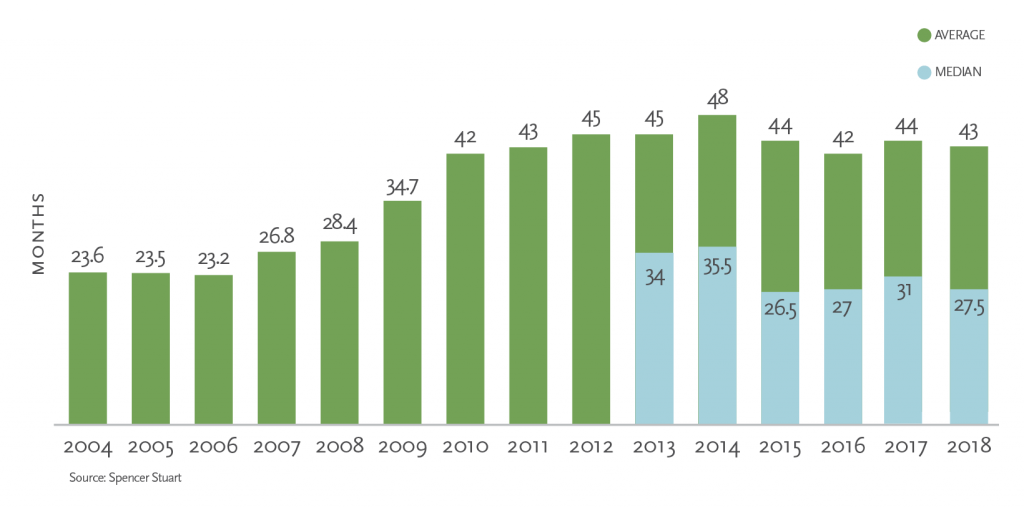According to the recent CMO Tenure Study by Spencer Stuart, the average tenure of a CMO at the top 100 US most advertised brands has fallen to 43 months. While that is far better than when CMO tenure hit a low back in 2006, with a mere 23.2 months, a problem is evident when the average CMO tenure is compared to that of other C-Suite executives, which is more than twice that of CMOs (88.4 months).
CMO DIVERSITY: MORE FEMALE CMOs, LESS MINORITIES
On the positive side, there is a trend towards CMOs being included on company boards and more women CMOs (36%) compared to 2017 (28%), while on the negative side, only 10% of CMOs are minorities, compared to 29% in 2017. Spencer Stuart found that of the 18 new CMOs in the study, none were minorities. The number of internally promoted CMOs increased, from 10 in 2017 to 13 in 2018.
According to Greg Welch of Spencer Stuart, “One of the messages that can get lost when focusing too much on average tenure is how CMOs jobs are evolving, especially for those marketers who are being asked to take on roles and responsibilities beyond the marketing organization. We are seeing more instances where CMOs are being tapped for GM roles such as Raj Subramaniam, who was just named president and COO of FedEx Corp. and co-president and co-CEO of FedEx Services, joining the likes of Jeff Jones who is president and CEO at H&R Block, and Mary Dillon, who is the CEO of Ulta. And CMOs are finding their place in the boardroom as well with Wells Fargo CMO Jamie Moldafsky at R.R. Donnelley and Nike CMO Michelle Peluso at IBM as just two examples.”
Spencer Stuart attributes the high rate of CMO turnover to the following:
“Failure to properly assess the incoming CMO’s skills and experiences, ensuring that they are properly aligned with the future needs of the organization
Poor alignment between the CEO and CMO on the mission (and the timeline) of the marketing organization’s output
Inflated expectations for “unicorn” CMOs who can immediately blend “magic” (creative) and “logic” (performance data) to drive growth, and bring others along on the transformation of the overall marketing efforts — and do it while aligning with (or changing) the organizational culture
Waiting until ‘Day 1’ to begin, whereas most successful CMOs seize on the chance to build momentum before their tenure formally begins.”
Spencer Stuart attributes the success of longer tenured CMOs to:
“Creative and compelling communication – Being a contagious evangelist to drive positive change.
A self-reflective commitment to learning – Possessing a high level of self-awareness to acknowledge what they don’t know, along with the humility to shed their preconceptions and curiosity about what they might learn.
A deep-rooted focus on team-building – Creating a marketing team that works together and can thrive in a disruptive environment, where employee satisfaction and engagement are key priorities.
An appreciation for alliances – Building relationships with C-suite peers and drawing both inspiration and improved collaboration from these interactions.”
